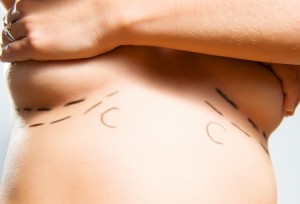Finally, it’s official
 Despite being used since the mid-90s and having approval for use in Europe, gummy bear implants have finally been approved by the FDA for use in the United States. Gummy bear implants are pre-formed breast implants that have specially cross-linked silicone to help them hold their shape and resist deformation and rupture. In other words, the silicone is more of a thick gel rather than a liquid. The two principal makers of gummy bear implants, Allergan and Mentor, received approval for use in breast augmentation and reconstruction in adults. Patient satisfaction with gummy bear implants is remarkably high and the complication rate is even a bit better than with other breast implants—specifically the capsular contracture rate is lower.
Despite being used since the mid-90s and having approval for use in Europe, gummy bear implants have finally been approved by the FDA for use in the United States. Gummy bear implants are pre-formed breast implants that have specially cross-linked silicone to help them hold their shape and resist deformation and rupture. In other words, the silicone is more of a thick gel rather than a liquid. The two principal makers of gummy bear implants, Allergan and Mentor, received approval for use in breast augmentation and reconstruction in adults. Patient satisfaction with gummy bear implants is remarkably high and the complication rate is even a bit better than with other breast implants—specifically the capsular contracture rate is lower.
Not everything about this breast technology is better, however. One issue with gummy bear implants is that they feel more solid than traditional silicone implants and certainly more so than saline. They are also more expensive. The biggest drawback to gummy bear implants, though, is that they cannot be inserted through small incisions, which means the surgical scar will be longer after gummy bear implants than with saline inflatable breast implants.
But where are your scars?
Aside from trying to create the most natural looking and feeling breast implant, plastic surgeons are always trying to find ways to minimize or hide surgical scars. Traditionally this has been done by inserting an implant through the areola. Newer breast surgery techniques, however, may hide the scars almost completely. In transumbilical breast augmentation, or TUBA, the breast implant is inserted through the navel (belly button). The surgical scar is hidden in a belly button fold.
While TUBA was initially criticized by some cosmetic plastic surgeons because of the difficulty in placing the implant, several studies have been published that show TUBA to be as safe as other breast surgery techniques. One drawback is that TUBA is only available with saline inflatable breast implants—the implant shell is rolled up, inserted through a small incision in the belly button, guided to the chest, and filled with saline until the desired size is reached.
Because it is one of the most challenging breast surgery techniques, it is important to find a plastic surgeon that is completely comfortable with the the TUBA procedure. Also, since insertion and scar in the areola is acceptable to most women, you may want to weigh that option against the more expensive and involved TUBA.
Upcoming advances in breast technology
The buzz at recent aesthetic plastic surgery conferences is breast augmentation using autologous fat transfer. In essence, fat is gently removed from an area of the body, filtered, cleaned, and inserted in the breast. Lipoaugmentation, as it is called, is still not ready for mainstream use. Several things need to be worked out such as determining how long the transplanted fat will last, how much fat can be safely moved, and if lipoaugmentation interferes with breast cancer screening mammography.
Many surgeons are hopeful that lipoaugmentation will be a means of contouring existing breast implants or even a solo breast augmentation procedure. Right now though lipoaugmentation is not widely practiced and not thoroughly studied in clinical trials.
